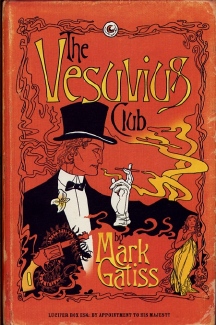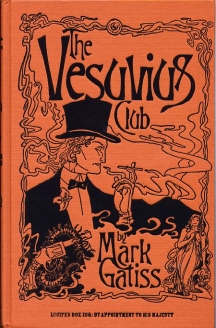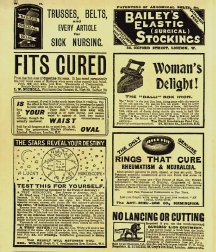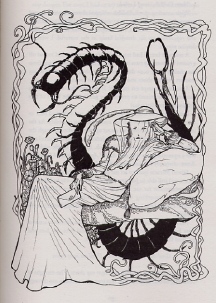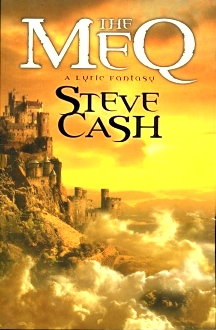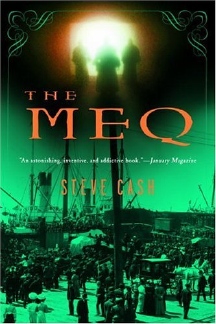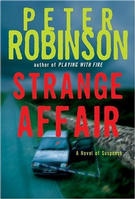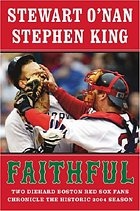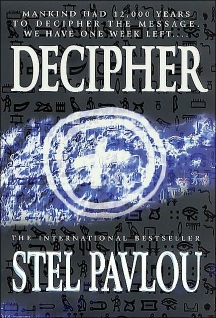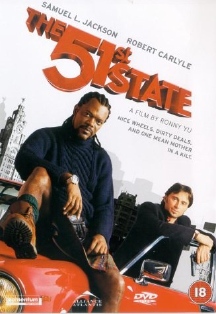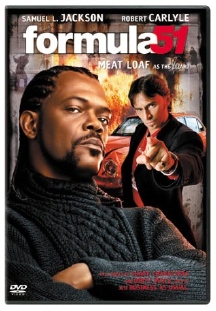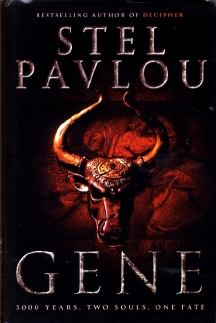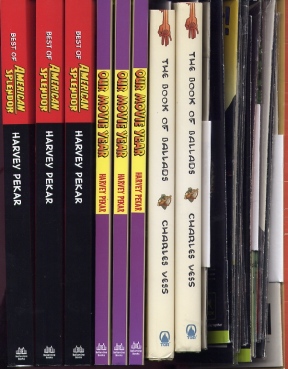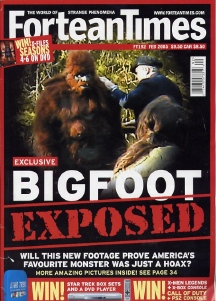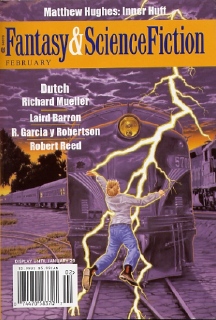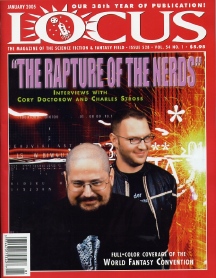|
|
|
This Just In...News from the Agony Column
|
12-14-05: Mark Gatiss Joins 'The Vesuvius Club' |
||||||||||||
Lucifer
Box Esquire Commands Your Attention
Yes, I'll admit that it took me two months to get the UK-only hardcover of 'The Vesuvius Club' by Mark Gatiss (Simon & Schuster UK ; November 1, 2004 ; £15). But some things are worth the wait and this is clearly one of them. For readers who loved Mark Frost's 'The List of 7', for readers who loved 'The Thackery T. Lambshead Pocket Guide to Eccentric and Discredited Diseases', for readers who loved '20,000 Leagues Under the Sea', or for readers who simply would enjoy sitting reading any of the previous titles in a stuffy English gentleman's club -- this is the book for you. And not only does the text itself look deliriously entertaining, the book is spectacularly produced. From stem to stern, from cover to cover, S&S have allowed Gatiss and his illustrator Ian Bass to create a wonderfully oddball illustrated novel that you can't get in the United States, and you wont hear about from the genre journals because it doesn't hail from an author previously associated with genre fiction. A year from now, count on it, that won't be the case.
Gatiss and his illustrator Ian Bass have actually ratcheted back the weirdness for this spectacular debut. Lucifer Box, portrait painter, Edwardian dandy and his majesty's most daring secret agent is the man who is called when Britain's most prominent vulcanologists start showing up dead. Before you can say "secret base in an extinct volcano", Box has killed a customer and taken on the assignment. And lest you think this is only the tale of an Edwardian secret agent, the illustrations clue you in that this book is chock-a-block full of science fiction, horror and fantasy staples. Ghosts, monsters, madmen and mad women haunt the pages and peek out from them.
Of course, all this would be quite excellent served up in standard book format, but the illustrations and design touches provided by Ian Bass take this book to another level. Stylish and numerous, the illustrations in 'The Vesuvius Club' are the kind of extra that move this book from the want-it to the must-have-it column. The faux aging of the dust jacket, the design imprinted on the cover of the book itself, the quirky endpapers with their old-timey advertisements all add substantially to the appeal of this title.
No matter what the precedent, it's the present that matters. And in the present, we have a present in the form of 'The Vesuvius Club'. Step right up! There's a new book in town, and it looks damn well worth buying. Tell the butler to bring it here, please. With a martini. Shaken, not stirred. |
|
01-13-05: Steve Cash's 'The Meq' from Del Rey |
||||||
There
and Back Again
Here in the bright future of 2005, Del Rey is releasing the title to the US. The book tells the story of young Zianno Zezen, who, should he decide to write, would be a perfect author for Howard Junker's magazine Zyzzyva. Young Z, as he's known, is a member of a human-like race that lives among humans. The Meq stop aging when they reach twelve years, and remain that age until they meet their intended soul mate. And while Del Rey wants us to think these books are like the work of Phillip Pullman, Serena had a rather different, but perhaps more lucratively-oriented take: "a cross between Superman and Harry Potter". Actually, the trope that Cash is drawing on comes from the world of vampire fiction, and Anne Rice in particular. Her character Claudia, the immortal child introduced in 'Interview With The Vampire' provides some of the most enjoyable moments of Rice's novel and the subsequent series. But Cash is clearly not traveling down the same bloody road that Rice follows. He offers all the immortality with none of the blood.
The marketing of this book for the US is pretty fascinating. You get a comparison to well known British writer Phillip Pullman, but not the more obvious JK Rowling take. Presumably "the next JK Rowling" is a bit overused these days. And the blurb they include is from the wonderful author Jon Courtenay Grimwood, a guy who has been around for many years in the UK, and whose 'Stamping Butterflies' is an outstanding novel from last year -- available only in the UK. Bantam / Spectra is going to release 'Pashazade', the first novel in Grimwood's excellent 'Arabesque' trilogy later this year -- after Cash's novel. Perhaps they are going to take a page from Grimwood's 'Stamping Butterflies' and retroactively release Grimwood in the past. When Cash shows up on our shelves, we already know all about Grimwood. Good plan! |
|
01-12-05: Adrian McKinty's 'Hidden River', Peter Robinson's 'Strange Affair' and Stewart O'Nan Teams With Stephen King in 'Faithful' |
|||||||||
| The
D'Auray Report by Terry D'Auray
'Hidden River'(Scribner & Sons, January 2005, $24), McKinty's second novel promises both more of the same – fast-paced action and black humor written in language that wraps death and darkness in lyrical Irish phrasing – and something completely different. Alexander Lawson, a new protagonist, is a disgraced Irish cop with a nasty heroin habit. When asked by the wealthy parents of his ex-girlfriend to investigate her murder in the States, Lawson sees a chance to reform and restart his unfortunate life. But this is a McKinty novel, so of course things won't work out so nicely. In fact, we can count on things getting a whole lot worse before they get better – or what, by novel's end, looks like better only because what's come before has been so thoroughly awful. Should that fail to intrigue, sample the opening paragraphs? "Seven time zones west of Belfast the murdered girl was alive yet and well. She was confident, popular, young and clever – this last virtue was going to be the death of her. "That and a slug from a .22." Enough said.
'Strange Affair' (Pan Macmillan Ltd, 2005, 17.99) is #15 in this long-running, ever-fresh series. Robinson sends Banks out of his Yorkshire turf and into London on a quest for his missing brother. Meanwhile, DI Annie Cabbot investigates the murder of an unidentified young woman who died with a slip of paper with Banks' name and phone number in her pocket. With Robinson doing the honors, the intersection of the two cases will be intricate, suspenseful, and emotionally powerful. His writing is dense, literary and detailed; his plots and especially his characters are rich and deep. As added testament to Robinson's justly-deserved international popularity, Stephen King blurbs on the back cover "Banks novels are the best series now on the market. Try one and tell me I'm wrong". Well, this is one thing Mr. King gets absolutely right.
In early August, King writes "You heard it here first: I don't think we're going anywhere but home come October. How I hope they prove me wrong". Well, King did indeed get it wrong, and I'm sure he's glad of it. 'Faithful' is a quick, fun and thoroughly delightful antidote to the long drought between last year's series and the start of spring training. |
|
01-11-05: Deciphering 'Gene' by Stel Pavlou |
||||||||||||
Book,
Treatment, Movie or NOTA?
You also get some fascinating reader reactions to BIBs. Some readers will try to read them and simply bounce off them hard, turned off by a book in which everything is meant to serve up scenes that combine action and lecturing. Critics and reviewers are often, though not always, in this group. Every once in a while, even the most hardened critic enjoys a good monster book, so to speak. Constant readers are usually in the bounces-off-'em group as well, though they can also usually recognize the signs that indicate a particular title is such a book, and will take pains to avoid it. Readers who are caught up in the ideas and the action will disregard the cardboard characters and the scene-stopping lectures common in such tomes. They'll trumpet such novels to their friends, and word of mouth can often turn into a wildfire that sells millions of books. These readers are not the kind of reader who speaks softly and carries a big stack. These readers want a book that pretty much blows up in their face, with Big Ideas, Big Actions and Really Big Consequences.
Now, I know you think I'm talking about That Book. I'm not talking about That Book. I'm the first type of reader, you know that, though I'm told I tend to speak loudly ("Stop yelling!" / "I'm not yelling! THIS IS YELLING!") and the stack of books I tried to carry around on a trolley supposedly made just for such a task actually collapsed the trolley, which I promptly returned. (Though the vendor made several smaller items which have proved to be quite useful.) I'll cop to being intrigued by the predecessor to That Book. But some Sixth Sense protected me, and boy is that appropriate given that 'The Sixth Sense' managed to bypass the world of books entirely, for which we can all be quite thankful. The forests thank you at any rate. But first editions of That Book are for sale for prices ranging from $30.00 (Such a deal!) to $250.00 (Sucker!). So, should you wish to be on the transmitting end of the word "Sucker!", or at least desire to ensure that you're not on the receiving end, you might want to keep an eye peeled for BIBs. You might not want to be seen wearing a bib or reading a BIB, but selling a first edition to swarming masses who thank you for the opportunity to part them from their money, well, that's a different matter. And come on, admit it, you've actually thought those thoughts and perhaps even said those words: "Thanks for selling me this book at an incredibly inflated price because my tiny brain wants it so much for no good reason that I could logically explain."
Let's talk about 'Decipher' first, which in the speculative fiction business falls into the "Kitchen sink" category of BIB. This baby's got every damn thing in it and depending on how you feel about every damn thing, it's either very good or, alternately, very bad. The premise is certainly nifty BIB material. It's 2012. Now, a brief lecture will inform you that in 2012, the Mayan calendar ends. Apparently, this isn't because they couldn't get a dozen swimsuit models for 2013. It's because the world is about to end, and because this is a BIB, that world-ending scenario is bang-, not whimper-oriented. Sunspots, the Great Pyramid of Giza, and ancient artifacts bigger than a breadbox are all acting up. Atlantis is rising. Well of course Atlantis is rising! It's 2012, innit? And duh, we need to get a nuke to the North Pole pronto, because some aliens have plans for the earth that dont include us. Pavlou strings it all together with a breakneck pace, required to keep the reader -- look over here now! -- from seeing the stitching. Some folks will know this book was made for them, and some will know it was not. Given the current bestseller literary climate where spotting the ancient conspiracy in a potted plant is all the rage, well, this novel should be totally outrageous. And indeed, one can easily imagine that it might bring you back should you have just spent the previous month reading 'Finnegan's Wake' or 'Gravity's Rainbow'. Or both of them, alternating one page at a time. While listening to the audiobook of 'Moby Dick'. Translated into Latin.
In this life, perhaps. But those pesky past lives -- stretching back 3,000 years to ancient Greece -- they add up, and pretty soon North, on his seventh re-incarnation, is Greek Warrior Cyclades going up against Babylonian Magi Athanatos. Or maybe he's Athanatos going up against Cyclades. Turns out neither man knows who they were or who they are. Kill or be killed. And blow lots of shit up. I was actually holding out for this book to be about some kind of killer gene, say, discovered by a 20-something gal who wears glasses but passes for a runway model once the glasses come off, and the gene, say, would have not just genetic code, but the zip code, and in the zip code, she'd meet a guy who found out he was part of an extended family that stretches back as many generations as are in the zip code. Let assume that it's a New York zip code, so it's not so high as those in California. Call it the "Zip Gene". And then you could have the "zipper scene" in the 'Zip Gene'. But it's not about that. It's about See Above. In fact, I read the first page and the writing seems fairly straightforward and relatively zippy. So here's the deal with 'Gene'. You've got a mass market paperback of the author's first novel coming out next month. 'Decipher' has a very That Novel buzz about it. Pavlou's new novel, 'Gene', is coming out now in hardcover, in the UK only. So if you want the True First Edition of 'Gene', now is the time and the UK (or any independent vendor who sells such titles, and you know the usual suspects) is the place. Now is your chance, not only to read about 3,000 year old men doddering through New York throwing adult diapers at one another. Now it's your chance to be on the sending or receiving end of the word "Sucker". And no matter what end you end up on, please don't tell me. Lest I be forced to tell you to "Zip it". |
|
01-10-05: Graphic Novel Contest Winners, The Periodic Table of Magazines |
||||||||||||||||
Imagine
That!
And you'll note another big stack of what proves to be Neil Gaiman Sandman issues. Plus one Tintin graphic novel. Confused yet? Let me explain. Rather awed by the generosity of the publishers, I decided to add to the contest a bit. I gave myself a dollar limit, which cannot be discussed here, because...well...it's probably more than someone more sane than myself might actually allot. So then I drove down to downtown Santa Cruz with my wife and we went and looked about for stuff to add to the prizes. We went to the one of the graphic novel/ comic stores first, but it was too early and damnit, they hadnt opened yet. So, we traipsed down to Logos to see that they had. What I wanted to get at first -- but it was too expensive -- was this huge run of Tintin graphic novels. They're absolutely gorgeous printings from 1975, oversized and full color inside. I did get one to add to the pot because it fell within my per-issue cost limit. But beyond that everything they had that was desirable would have limited the overall number of prizes. So, Claire having found a couple of paperbacks to interest her -- one of them by 'The Book of Ballads' contributor Sharyn McCrumb, we headed back to Atlantis Fantasy World. They appeared to be closed, but as we walked up the man in charge pulled down the sign and welcomed us in -- or me in, since Claire went back to the car to read her books while I did my thing. Frankly, I was quickly lost in the place, as I'm just not familiar enough with the genre to know who goes with what. I looked about and eventually just asked the gal working there where I might find the "thin" issues of Neil Gaiman or Richard K. Morgan's 'Black Widow'. Alas, when I went and grabbed the whole sack of Black Widows, the guy refused to sell them to me, since, he told, he ordered for his regular customers and didnt want to sell them out. In the end, I got one of each. Damn. But then he told me they had a bunch of Sandman's back in the used section, and I was able to bulk out on them. So I go up to the cashier and drop this big pile of comics and she looks at me asks, "Why are you buying all these?" "Well," I tell her, "it's a promotion for my website." "What are you promoting?" Uh. Oh. Uh. "...Reading?" I ask. "Yeah, reading." Money transferred electronically, I took my leave of Atlantis Fantasyworld. We came home and discovered the camera was missing, so there was a bit of fire drill about that, but I sure it will turn up sometime. I hope. Once that was decided, I took the printouts -- 1 page each for all the entries, folded them four times, then put 'em all in a big paper bag. I announced what was being given away and my wife plucked the lucky winner's name out of the bag. I put the email in the each book, and we enjoyed hearing the vast variety of where you all live. By the time you read this, everyone who entered will have been sent an email letting them know whether / what they have won. If you entered and didnt get a results email from me, email me again and let me know. I'll be mailing these on Tuesday or Wednesday, it being a not insignificant job getting them packaged up, addressed and to the post office. I'll be using the "media mail" rate, which is not very quick, so I'd recommend no breath holding exercises while waiting. When you do get your package let me know. I have to admit that when Colleen sent me that huge Harvey Pekar 'Best of American Splendor', I had to lash myself to the mast to prevent one from dropping into my collection but they were sent to be in the contest. Once again, thank to the writers for writingk the illustrators for illustrating, the readers for reading, and especially to the very kind folks at Random House (Colleen) and Tor (Fiona) for helping me make this contest highly work entering. Congratulations to the winners, and trust me, there will be more contests, though I don't know that I'll be able to make them quite as opulent as this one proved to be. Try, just try counting the little spines and guessing how much I shelled out. What is the matter with me? Oh, I remember. I'm promoting reading. |
||||||||||||||||
F&SF February 2005, Locus January 2005, the New Yorker January 10, 2005,
and Fortean Times February 2005
I think that Fortean Times 192 -- February 2005 -- was actually the first to arrive. The cover story -- 'Bigfoot Exposed' -- is probably a whopper for those who havent been following the emerging claims and counter-claims that have been flying about for the last year or so. The short version... We've probably all seen, at one time or another, the famous 1967 film of Bigfoot by Roger Patterson and Bob Gimlin. It's the origin of all the shaky-cam footage that is currently the most annoying film-fashion to shiver onscreen. In Bluff Creek, California, in 1967, Patterson and Gimlin claimed to have shot the famous footage of an ape-woman out for a stroll. The veracity of the film and the story has been endlessly debated, and the article by Kal K. Korff, from the book 'The Making of Bigfoot' by journalist Greg Long, published by Prometheus Books -- is not likely to change that. Of course, they do seem to have Patterson and Gimlin pretty much debunked. He's got a confession from Bob Heironimus, who claims to have worn the Bigfoot suit seen in the movie and Phillip Morris who claims to have made the suit. They've got the guy who helped Patterson fake the footprints, who rented the camera. It's over. But. But. I cant say that Long and Korff help matters much by doing the famous James Randi trick of re-creating the film using the original players, to show that the film could have been faked. This is an article that demands more than a casual glance at the local independent bookstore where you peruse the magazines. They've got a row of pictures that might give the impression of being outtakes from the making of the Patterson film instead of their own mockup. And to my mind, the old "We can fake it so it must be fake," argument belongs in the Bigfoot dungheap. With, of course, all those phony footprints. Where is the truth in all this? Accompanying the article by Korff is an inset by Daniel Perez, a well-known advocate for the existence of Bigfoot. Loren Coleman argues persuasively for the existence of undiscovered North American apes, while Korff and Long argue persuasively for precisely the opposite. If the truth is somewhere between, what might it be? We can, of course, thank the Fortean Times for providing material on both sides of the divide. In either case, there's a lot to be left for the imagination.
If I'm not mistaken -- and I may be -- Fantasy and Science Fiction for February 2005 arrived next. This time around the lineup is pretty sweet. The cover illustration (still blissfully apparent, with my address label on the back again, thanks!) goes to Richard Mueller's railroad fantastic short story 'Dutch'. Top billing on the cover goes to matt Hughes, whose 'Inner Huff' features the return of one of his perennial characters, Guth Bandar who makes an appearance in Hughes' latest novel, 'Black Brillion'. That novel was short-listed and packed up when I went on my recent road trip with the family, though my slow reading habits prevented me from reading it. Yet. But I will, I swear by the noösphere! R. Garcia y Robertson tells the story of 'The Queen of the Balts' in what F&SF charmingly calls a novelet. Presumably, this is holding up the fantasy end of the equation. I'm quite looking forward to reading Laird Barron's 'Proboscis'. Gordon Van Gelder's write up of the guy is certainly intriguing -- "new Stephen Kings and Koji Suzukis" -- but it's more that title. It brings to mind certain very unsettling scenes from China Miéville's 'The Scar' and Douglas Clegg's 'The Children's Hour'. Creepy, creepy, creepy monsters. You've got to love 'em. Robert Reed's story looks like it might be a Ray Bradbury-ish whimsical fantasy but when it gets going it makes a mighty big turnaround. In any event, it's hard to stop reading, and that's generally what is required of great fiction.
Locus --ah Locus -- arrived next, with a one of their best covers ever in my brief subscribing time. Charles Stross and Cory Doctorow, two of my favorite writers, get the nod here with long and informative interviews. In the typical Locus fashion, theyre not really interviews so much as essays by the writers, but hell, they're interesting words by interesting writers. There are lots of very tiny color photos from the World Fantasy Convention. It's certainly an interesting, if time-consuming task to go through them and put faces to the names on your books. And I know that my readers have a boatload of books by these authors.
Then there is The New Yorker. The issue dated for today arrived on Friday, and I was ready to punt it in spite of the non-ugly cover. But there's a few things worth looking at here. First is an article on Bronson Alcott, Louisa May ('Little Women') Alcott's father. Generally dismissed by her biographers as a loser and a parasite who lived off his daughter's literary earnings, Geraldine Brooks nonetheless paints a fascinating portrait of a man who authored a book in 1836 titled "Conversations with Children on the Gospels" that drew rage from the ranks of organized religion. Not a happy or successful guy, but certainly an interesting gentleman to read about. But more importantly, the New Yorker continues its predictable great fiction binge with Edwidge Danticat's wonderful story 'Reading Lessons'. Readers might have heard last year of Danticat's short story-collection-as-novel 'The Dew Breaker'. It's told by a prison guard from Haiti who specialized in torture, each story following a different inmate. Strong stuff, and alas, the interview that my KUSP comrade Robert Pollie conducted is not yet online. I'll ask him about it and see if we can post it here, because readers will want to know more about this author, especially if they enjoy 'Reading Lessons'. It's got that magical thinking point of view down so perfectly it's utterly transparent. Fascinating, gripping work that keeps the magazine profitable, one damn week at a time. Look, I ask you again, how fast are we to read to keep up with this? One suggestion that might be helpful to give readers more time to read is to encourage microsleeping habits during the movies you try to watch. Then, you can get up earlier or stay up later and read -- magazines about the movies youre microsleeping through. |
